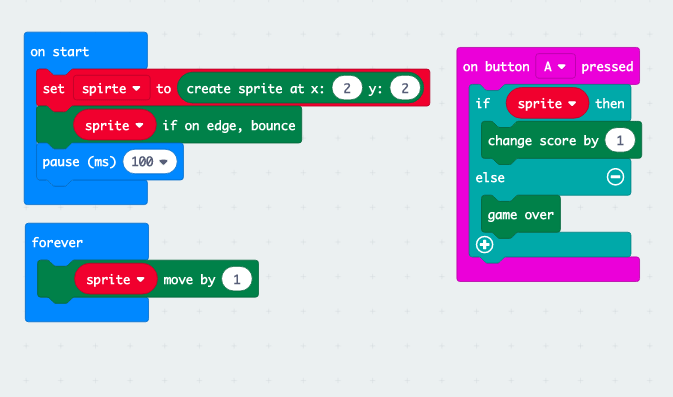Tech Team Micro:Bits
1. What is the name of the device you have chosen?
We used a regular micro:bit, but worked on coding different games on the micro:bit.
2. What is it used for? Can it be used for other things in a classroom setting?
I believe that a lot of the coding games could be a fun engaging way to teach buddies in leadership some beginner coding skills while having fun. This would be a neat way to incorporate tech into courses that rarely get to use the innovative additions at Riverside.
3. What code did you use and what does it do?
I worked on coding the game snap the dot, which is a skill game testing to see how accurate you can press the button before the dot reaches the centre of the screen. I also worked on the rock paper scissors game with Cristina.
4. Can you think of any other meaningful ways micro:bits can be used in previous and/or current classes you have taken? Please think about this and explain how and where you think micro:bits can be used.
Math: In math 10 we did a number of engaging activities to understand the concepts in a more visual way. For example, with the surface area of a circle we took apart oranges and measured how many flat circles the surface area filled up to derive the formula. I think this same idea could be applied using the micro:bit. The rock paper scissors game is programmed so that when you shake the micro:bit it produces a random shape: rock, paper or scissors. What if instead of drawing the rock, paper or scissors we, for example, were to draw the different types of polynomial functions. Then we would shake the micro:bit and it would produce a random graph and we have to name the amount of zeroes its function would have. This is a very specific example but it could be used to introduce concepts in classes, that are more visual. This way students would learn to code and they would easily pick up the math concepts as well. I’m sure this same idea could even be applied to physics or biology.
French: On trivia day in French there is always some sort of challenge that is unrelated to the trivia questions, here is an example of a way that our vocabulary could be expanded by creating a speed challenge with the micro:bit. The groups would have to figure out the coding while speaking entirely in french. The micro:bit website is available in french so this could work in all French classes, but there is not one for Spanish or Italian yet!
Leadership: Like I mentioned above, introducing our buddies in leadership to coding would be a great way to bond with them as a lot of them enjoy playing games on their phones they would pick up the coding very quickly and this could be a great activity.
Overall, during the past four years at Riverside I have done quite a few inquiry products all that could have been improved with the addition of a micro:bit in some shape or form, so I believe allowing students to learn the tutorials and then try to incorporate it in projects that already exist would be the best way to integrate it into our learning. I think simple additions will allow for the students to grasp the coding and then be able to create new projects once they learn the basics.

